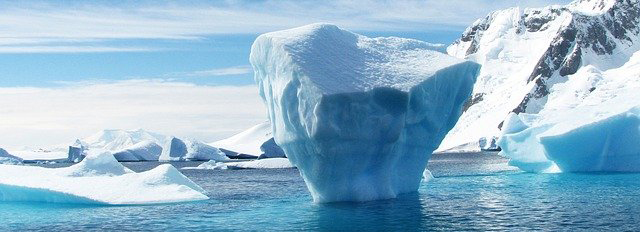Arctic
Contents |
[edit] Introduction
The Arctic refers to the northernmost part of the world (or Circumpolar North), normally defined as the area that is within the Arctic Circle, a latitude line that runs about 66.5° north of the Equator. The Subarctic is just below this line, it historically has also maintained permafrost but where the upper most layer changes seasonally, with grasses, shrubs, mosses, lichen, and some trees growing.
The polar opposite of the Arctic is the Antarctic which is the southern most surface of the globe, defined similarly by a latitudinal line running 66°30′ South.
[edit] Origins
The word Arctic originates from the Greek word for bear (arktos), related to the constellation of stars known as the great bear and little bear which point to the north star (the ursa major and ursa minor constellations). These can be seen in the northern hemisphere, similar to the location of the Arctic on the northern surface of the globe.
[edit] Geography
The arctic circle includes the Arctic Ocean, including the deep Arctic Basin (also referred to as the North Polar Basin) as well as the northern most parts of Finland, Norway, Sweden, Russia, Canada, Greenland, and the U.S. state of Alaska, some parts of which might be defined as subarctic.
[edit] Temperature
Both the Arctic to the North and the Antarctic to the South are cold because they don't receive much direct sunlight, the sun always stays low on the horizon, and in winter, below the horizon. The Arctic Tundra Biome is one of the coldest of all global biomes, with an average annual temperature in the Arctic Circle between -12 and 6 degrees C. However different sources have reported an average temperature increase in the region over the last 30 years with some 10-20% reduction in ice cover.
The EU project Copernicus has reported that the Arctic region has been warming at a rate well above that of the planet as a whole since the 1990s, due to a phenomenon known as Arctic amplification.
[edit] Arctic amplification
Arctic amplification describes a phenomenon by which localised temperature rises in the arctic region can be two or three times that of the rest of the globe. The specific causes of this are debated but there is a general acceptance that there is a relationship to the albedo effect where a perfect light coloured reflector would have an albedo of 1, and a dark absorber would have an albedo of 0. As thick areas of ice decline, the thinner ice left is more vulnerable to further melting and in areas where reflective ice is replaced by dark oceans more energy can be absorbed from the Sun, thus causing additional heating and localised warming. This Arctic amplification is further driving the melting of ice sheets, which will impact sea levels, as well as the potential for permafrost melt, which releases large amounts of methane gas.
[edit] Related articles on Building Design
- Adaptation
- Albedo in the built environment
- Bioparks.
- Biodome.
- Climate change science.
- Climate change 2021: the physical science basis IPCC report
- Design Summer Year (DSY).
- Designated land.
- Designated areas.
- Geoparks.
- Sustainability in building design and construction
- Sites of Special Scientific Interest.
- Tundra.
- Types of land.
- World heritage site.
Featured articles and news
Infrastructure that connect the physical and digital domains.
Harnessing robotics and AI in challenging environments
The key to nuclear decommissioning and fusion engineering.
BSRIA announces Lisa Ashworth as new CEO
Tasked with furthering BSRIA’s impressive growth ambitions.
Public buildings get half a million energy efficiency boost
£557 million to switch to cleaner heating and save on energy.
CIOB launches pre-election manifesto
Outlining potential future policies for the next government.
Grenfell Tower Inquiry announcement
Phase 2 hearings come to a close and the final report due in September.
Progress from Parts L, F and O: A whitepaper, one year on.
A replicated study to understand the opinion of practitioners.
ECA announces new president 2024
Electrical engineer and business leader Stuart Smith.
A distinct type of countryside that should be celebrated.
Should Part O be extended to existing buildings?
EAC brands heatwave adaptation a missed opportunity.
Definition of Statutory in workplace and facilities management
Established by IWFM, BESA, CIBSE and BSRIA.
Tackling the transition from traditional heating systems
59% lack the necessary information and confidence to switch.
The general election and the construction industry
As PM, Rishi Sunak announces July 4 date for an election.
Eco apprenticeships continue help grow green workforce
A year after being recognised at the King's coronation.
Permitted development rights for agricultural buildings
The changes coming into effect as of May 21, 2024.






















